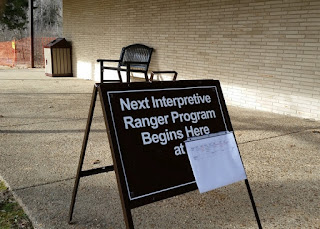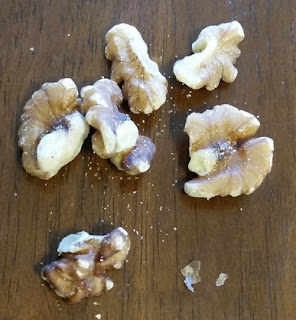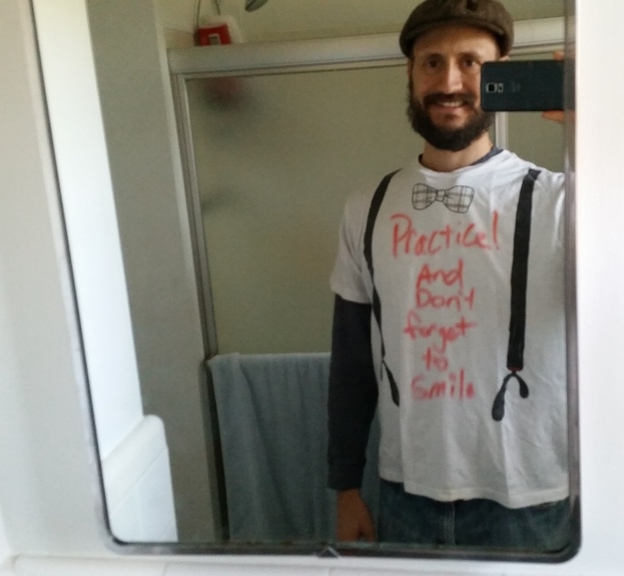At long last we have crafted a program from the ground up. First, we selected our tangible, intangible, and universal resources, and we ascertained our audience. Next, we crafted a message we wanted to give the audience and made sure it was significant accounting for a Primary Interpretive Message that was made up of subthemes. Then, we connected the subtheme to the visitors with an interpretive technique that explains the significance of the site and allows the visitors to have their own intellectual and emotional connection to the resource. What then remains? In this installment of Creating an Interpretive Program series the finishing touches get applied: the sequence and logistics of a program. While this may not be terrible exciting, they are important to make a basic program into a great program.
 |
| Have a place to start |
To review, the practical end of the programming is in the techniques that illustrate subthemes as part of an overall interpretive message. The techniques themselves are not the program; they are things that draw attention to the narrative (the message), but by themselves are not connected but only in topic. This is the time to craft the aspects of the program that the visitor will experience and decide the sequence in which you will run the program.
Here are some things to consider in sequencing a program:
- The Primary Interpretive Message is like a story, so what part of the story will you start with first? This is the sequence.
- What subtheme makes sense to start with first, second, third, etc.?
- Should you start in the chronological beginning?
- Will you start at the end and work your way through to the chronological beginning?
- Will you start with what is directly in front of you?
- Would a topical tour be a better option than a chronological one?
All of this is up to you. As you engage in your program you must also think of how you wrap up subtheme 1 before moving onto subtheme 2. Abruptly ending one and starting another is a clumsy way of running a program, so work on transitioning from one to the other so you can continue to develop the big interpretive message into an idea to be explored together. This can be done by briefly introducing the new topic before you launch into it, or creating a sense of mystery before the new topic, asking a question to consider that pertains to it.
 |
Bolts! They hold things together, small
but critical if you don't have them
|
Of course, there is going to be some nuts-and-bolts things to look over first, as previously hinted, and some questions to consider.
- Knowing where to start or have the program is essential. What time will the program begin? Is there any set up needed? How long would it take to get it completed?
- How often will this program repeat? Is it one-and-done? Weekly? Hourly?
- Will it be hot, or sunny with the sun in their eyes?
- Can the program be moved indoors if it rains?
- Giving an introduction is great as it gives you a chance to introduce yourself as well as the program and any other instructions as needed, such as safety concerns, mobility issues, or listening problems.
- How long does the program last?
- Is there any set-up or take down that is necessary and can you do it by yourself or do you need help?
- How does the program end? The old joke is that every good tour ends in the gift shop has a bit of truth to it.
 |
Nuts go with bolts, but these are the
wrong kind of nuts, make sure that
your program components support
each other!
|
With these things in place, the script becoming the next thing that must be tackled. Up until this point all of your writing has been in the realm of theoretical; now we must turn that theory and planning into action words to speak with visitors. The theoretical writing will help you form an outline which is then used to create the narrative of the program. Speaking the written word aloud will help with flow and catch any jagged edges and dangling thoughts and cut out all the extra theoretical stuff that get in the way or bore visitors while helping you remember what to say. Generally speaking, a detailed outline of text is about a minute of speaking. Basically it is a read-through practice that will help commit some of your program to memory and start cementing what you will actually say. This is followed with more practice.
 |
| Practicing in front of a mirror can be helpful. A dry erase marker can even be used to make more notes |
A physical walk through will help create pacing and will help turn over some logistical errors and make for a better experience for the visitor. Practice, practice practice! Soon it will be ready to start the program with some visitors. Having a peer or supervisor observe you will help catch some things that you have missed and be ready to receive constructive criticism and apply those observations and suggestions.




No comments:
Post a Comment